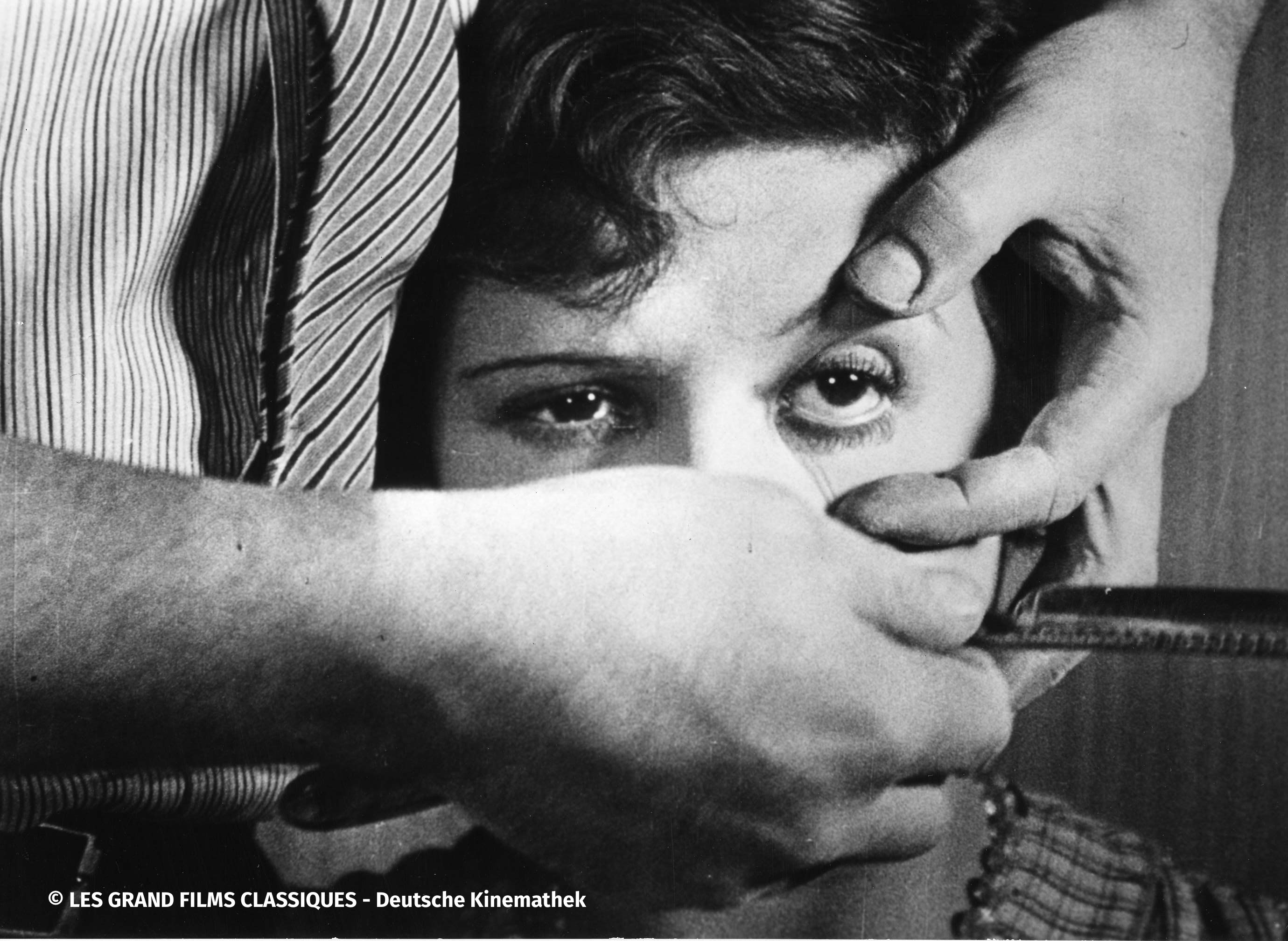The Spanish director Luis Buñuel was just 28 years old when he created the first surrealist masterpiece in film history together with Salvador Dalí: AN ANDALUSIAN DOG. Countless merely associatively linked scenes were mounted in the 19-minute short, creating a dream logic rather than a rational series of events. External reality and perception blur unduly. Already at the very beginning of the film, Buñuel succeeds at creating a parallel montage that is deeply shocking,
breaking with notions of viewing convention: a man sharpens his razor blade, goes outside onto the balcony and looks longingly to the evening sky. While a small cloud passes over the full moon, the man gashes a young woman brutally across her eye. Subsequent visually dramatic scenes provoke while simultaneously fascinating with poetic metaphors: Out of the wound of a hand that resembles a stigma, a stream of ants crawls out. The breasts of a woman transform under the hands of a slavering man on her backside. A man pulls two priests and two concert pianos covered with donkey cadavers along on rope. Buñuel continually enshrouds clear meaning with his surrealist scenes and denies the viewer any orientation. Subheads such as “eight years later,” “around three in the afternoon,” “sixteen years ago,” or “with the spring” only propel forth the uncertainty. On the musical level. Buñuel works by means of repetition. Two pieces are constantly alternated for the dramatic scenes,
now in counterpoint with an Argentinian tango, now exaggerating moments of passion with the ‘Liebestod’ from Richard Wagner’s TRISTAN AND ISOLDE.

